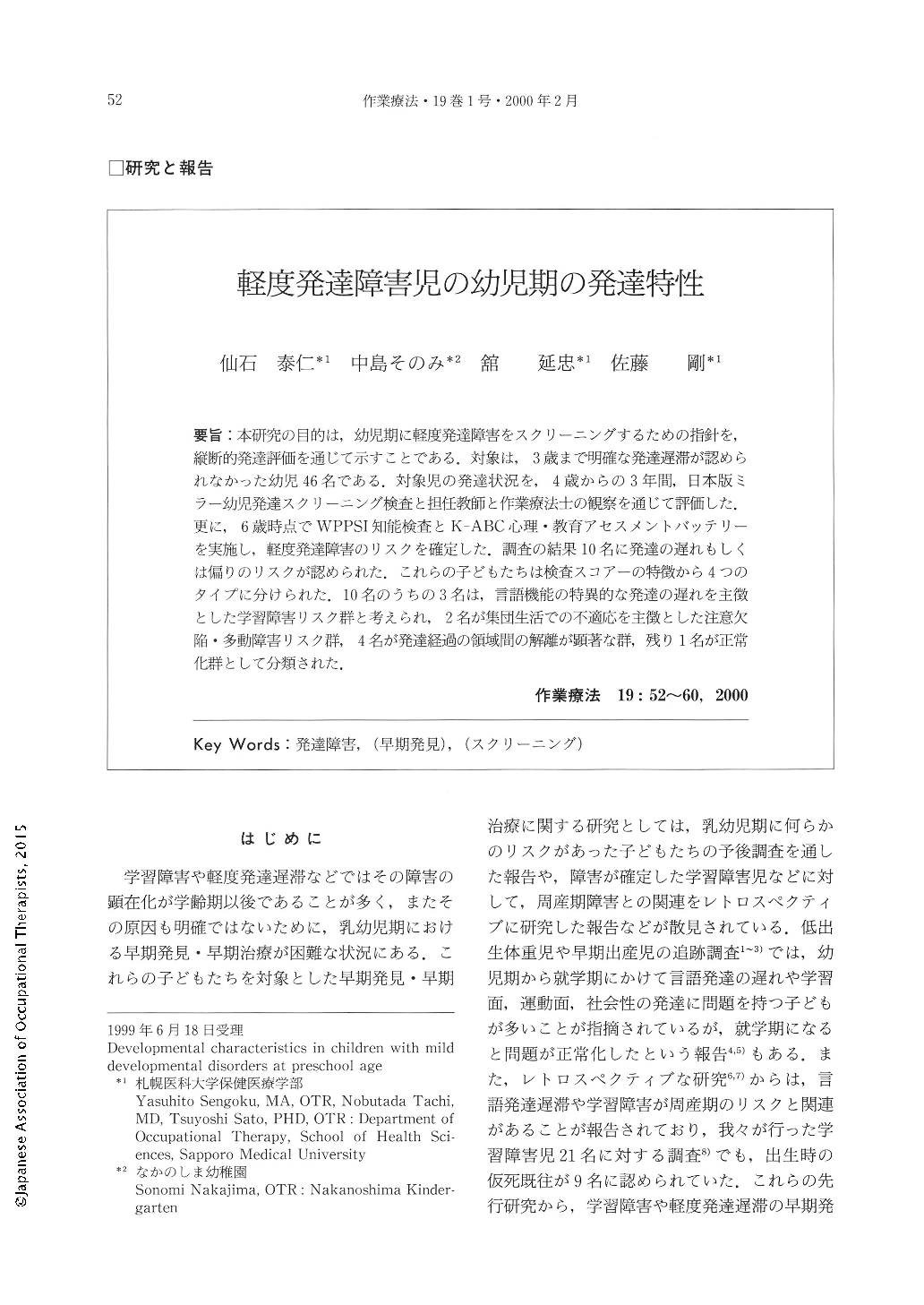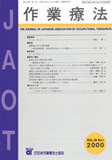Japanese
English
- 販売していません
- Abstract 文献概要
- 1ページ目 Look Inside
- 参考文献 Reference
- サイト内被引用 Cited by
要旨:本研究の目的は,幼児期に軽度発達障害をスクリーニングするための指針を,縦断的発達評価を通じて示すことである.対象は,3歳まで明確な発達遅滞が認められなかった幼児46名である.対象児の発達状況を,4歳からの3年間,日本版ミラー幼児発達スクリーニング検査と担任教師と作業療法士の観察を通じて評価した.更に,6歳時点でWPPSI知能検査とK-ABC心理・教育アセスメントバッテリーを実施し,軽度発達障害のリスクを確定した.調査の結果10名に発達の遅れもしくは偏りのリスクが認められた.これらの子どもたちは検査スコアーの特徴から4つのタイプに分けられた.10名のうちの3名は,言語機能の特異的な発達の遅れを主徴とした学習障害リスク群と考えられ,2名が集団生活での不適応を主徴とした注意欠陥・多動障害リスク群,4名が発達経過の領域問の解離が顕著な群,残り1名が正常化群として分類された.
We presented guidelines for screening mild developmental disorders by means of a longitudinal study of developmental characteristics. Forty six children, who had not been identified as developmentally delayed at age three, were evaluated, employing two units of screening, to find developmental disorders from four to six years. In the first unit, teachers administered JMAP (The Japanese Version of Miller Assessment for Preschoolers) Test Battery, along with the observation of occupational therapists in each year. The second unit included WPPSI intelligence tests and K-ABC (Japanese Kaufman Assessment Battery for Children) —taken only if we suspected something unusual from the first unit test. Ten children were at risk for developmental delay and/or developmental deviation in the first unit. Those children were classified within 4 types of developmental characteristics. Three children showed developmental speech delay. Two were considered to have attention deficit-hyperactivity disorder. Four showed variability in developmental scores. One showed a normal development. Assessment of development by means of longitudinal studies may be useful for screening high risk children.

Copyright © 2000, Japanese Association of Occupational Therapists. All rights reserved.


